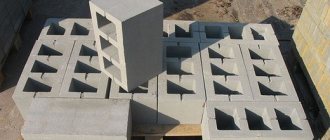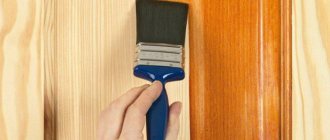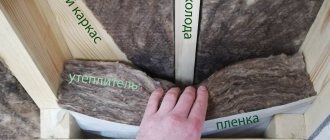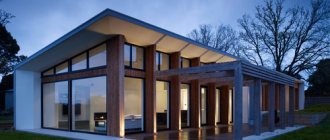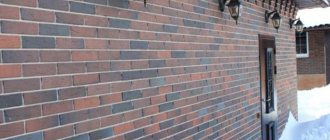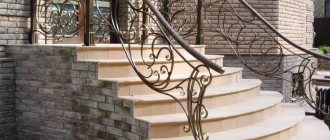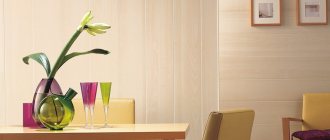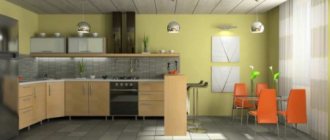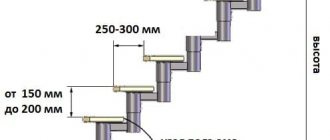Street
We cannot forget that handrails are a necessity for open spaces, used for safety reasons, not to mention their aesthetic function.
They can really highlight the architectural ensemble of the house. An example of this is the following image (from Cornerstoun Group Architects via Houzz).
Metal railings can create a striking contrast with a wood-planked porch and staircase (by Mark English Architects via Houzz).
Shiny chrome handrails with horizontal parallel lines are often used to frame cement staircases (from NYC Royal Stairs Inc.).
Railings are often used on balconies and other above-ground spaces to ensure the safety of people who may be there. However, while focusing on functionality, don't forget about style (from NYC Royal Stairs Inc.).
We finish our selection with handrails framing the platform located indoors. There really is a need for them. The premises are very spacious and, combined with high ceilings, this requires certain security measures to be taken (from Elfish Investments).
So, whatever railing you choose, make sure it fits with your style. And don't forget that sometimes the simplest solutions are the most effective!
Today's fencing options
It is worth immediately noting that modern solutions without fencing, as in the photo above, or options for fencing with cables are complete irresponsibility and disregard for safety rules.
Otherwise, the generally accepted methods of attaching railings to the wall and to the floor have been preserved. However, new materials and design solutions make it possible to make three types of fastening:
- Vertical to the surface of the floor or stair step.
- On the side, at the end of the string of a staircase or balcony slab.
- On the other side of the slab or staircase element.
In terms of “interaction with the wall,” the mounting parameters have changed little. Classic solutions are used - anchor bolts or welding connections with pre-installed support points. There is a technique when the elements on which the handrail is mounted are structurally a special part of the load-bearing elements of the walls. Also, the use of load-bearing points is implied in cases where it is necessary to attach the railings to the posts.
When it comes to cases where you need to attach a ready-made railing structure to the wall, use the following method. Power points are created in the places where the fittings are attached. Usually these are anchor bolts, securely embedded in the wall. In the recent past, cement was used for this. Today, polymer adhesives are widely used, which adhere perfectly to the surrounding wall material and firmly glue the anchor. Afterwards, a handrail with railings is mounted on the constructed power elements. The entire work process can be seen in general terms in the video.
Most often, it is necessary to fasten the railings of wooden stairs to the wall. This is the best choice for a very simple reason - the strength and wear resistance characteristics of a wooden structure are usually much lower than those of the surrounding walls.
Types of railings and handrails according to manufacturing method
Depending on the material, there are different ways to connect parts. But with any of them, the main attention should be paid to the requirements of SNiP so that movement on stairs and high platforms is safe.
Prefabricated
Prefabricated railings include any railings that are made by connecting individual parts using different fastening methods. Wooden balusters, handrails and infill are mounted on dowels, cutting the ends into the steps and railing strips. The handrails themselves can be attached with self-tapping screws, but a dowel connection is also used.
To assemble metal structures, threaded connections similar to pipelines are used. Horizontal crossbars can pass through holes in balusters. Infills of another type are collected separately into screen sections, attached to the steps and film individually, etc.
When using glass or plastic screens, assembly is carried out by fastening the panels into clamps mounted on balusters. The modules are installed using dowel-type fasteners: the tenon of the horizontal strip or screen filling fits into the hole in the rack. Plastic balusters are attached to the steps with self-tapping screws and dowels.
Welded
The weld is used to connect stainless steel handrails to vertical posts. Welding is carried out using a special method (argon-arc), and the joints do not have pronounced metal deposits. This allows you to get a more durable structure than with prefabricated installation. Fastening to the stairs is carried out using special fittings and screws or to the side of the step using welding or a bracket.
Simple welding is used to join ferrous metal. After installation, it is important to clean all seams so that they do not injure those walking near the fences.
Forged
When using forging to design railings, 2 types of connections are used:
- blacksmithing, using clamps or riveting;
- welded
Welding is more often used for the installation of supporting structures, and forging methods are used for connecting infill parts. But when using cold forging and bending, all elements of the railing are welded to save time.
Cast
Casting is used not only for metal railings, but also in the manufacture of concrete and plastic modules. Whole cast sections are connected using tongue-and-groove techniques. The disadvantage of cast iron, concrete, and metal sections is their heavy weight.
Unusual external railings: photos of products
A staircase is an integral element in a house where there is more than one floor. But not only. Some buildings have such a high first level that you have to take a series of steps in order to get into the home. In this case, it is necessary to consider the construction of such structures as an external staircase, which differs from the internal one and has its own nuances.
For floors located above the first floor and having an entrance from the street or an external balcony, a design such as a street staircase is also used.
Railings for stairs located on the street must have their own specific features. Due to their location and the fact that the elements are always located in the open air, exposed to various weather conditions, these structures must be installed correctly and according to the rules. In addition, the material from which street stairs and railings are made must also correspond to the location of the structures.
Materials for production:
- Metal;
- Plastic;
- Stainless steel;
- Glass;
- Concrete.
As we can see, due to the fact that the elements will not be protected from rain, wind and sudden temperature changes, the choice of material is limited.
Attaching handrails to stairs and floors
Fastening the posts and balusters of the fence to the surface of the floor or stairs is a more complex issue.
The classic method is to act according to standards. In fact, today most solutions follow accepted requirements, for example, as in the photo. A recess is made in the surface into which the stand is installed. A shoe is put on top, which, in turn, is also securely attached to the surface. Additionally, it firmly fixes the rack, preventing scrolling or loosening.
The side fastening of the railing posts is fastening to the end of the stair string or the balcony slab. This method can be carried out using appropriate accessories. Usually this is a power block into which the stand is inserted and rigidly fixed. The fastener element that bears the entire load can be attached using anchor bolts or spacer tubes. An option is possible when it is simply welded to special zones made on the string of the stairs or removed from the slab.
The option of fastening on the other side of the bowstring works as a hybrid of the first two solutions. A rigid fixation of the rack and, at the same time, a power element of the fastener are required. In this case, two methods are usually used.
- A through hole is made in the slab or stair element. The entire block that secures the stand is located on the reverse side.
- The recess for installing the stand is blind. However, there is a hole for the passage of a bolt, one or more, which connects the bottom of the rack and the power element located on the other side.
General Tips
If fastening of metal railings is required, use appropriate connecting hardware. This way you will preserve the appearance of the coating, and also ensure the disassembly of the structure.
Whatever solution you choose, remember that safety must come first. The railings should not dangle, the posts should have a good margin of safety under lateral loads, the height of the fences should be sufficient, preferably in accordance with the standards. The fastening of any elements must be reliable. You should not sacrifice safety for the dubious benefits of beauty and unusualness with minimal protection.
Railings for stairs
Date of publication: 02/20/2019
2 231
Rating:
5 (100%) 1 vote[s]
Railings for stairs perform their main function - to serve as a support while walking and to ensure safe movement. But if you give the railings an unusual shape, the staircase will become a spectacular object of individual design. It is the railings that set the main stylistic direction and give a feeling of completeness and integrity to the staircase structure.
Railings for stairs
Variety of materials
The appearance of the railing is determined by the material: how flexible it is to create different shapes, original textures and detailed elements.
Types of railings:
- Wooden.
- Metal.
- Glass.
- Polyurethane.
- Acrylic.
- Combined.
Metal railings
The most popular type of stair railings has many advantages. These are reliable and durable railings, easy to maintain, and do not deform when the temperature in the house changes. Metal allows you to create both sophisticated, luxurious options with complex weaving and anti-vandal railings without an emphasis on design.
Railings
The elegance of aluminum fencing
An ideal solution for interiors in high-tech, loft, minimalism, eclectic or modern styles. Aluminum railings are lightweight, so their shapes are traditionally refined and do not visually make the staircase look massive. Many people choose aluminum for its beautiful shine; the material can also be tinted in any color.
Thin lattice and mesh fences made of aluminum look beautiful. You can order solid vertical fencing with original perforation in the form of geometric shapes and flowers. The peculiarity of aluminum railings is their low strength and instability to street conditions. This is an ideal solution exclusively for interior stairs.
Reliability of stainless steel
Unlike aluminum, this type of metal is very durable and durable. Ensures the durability of the staircase, reliably fixing the elements of the entire structure. It is not customary for staircase railings in a private home to be made entirely of stainless steel - such a design looks a bit rough. Steel is successfully combined with handrails made of natural wood. This option allows you to create a massive, solid, but respectable staircase.
Noble forging
If you have opted for metal railings, then the most luxurious shapes can be obtained using forging. Forged railings are handmade masterpieces. The filigree and complexity of the railing depends on the skillful hands of the master.
Advantages of forged railings:
- Allows you to create ideal curved, smooth lines.
- High degree of fall protection.
- Durability, corrosion resistance.
- Creation of any decorative elements: twisted plants, birds and animals, ornaments, family initials.
- Available in any color.
- Patination in gold, bronze or silver.
Forged staircase elements look good in combination with other forged objects in the interior of a country house: twisted furniture frames, wall sconces, mirror frames. The catalog of forged railings surprises with its diversity. Floral ornaments, foliage, flower buds are suitable for interiors in the Art Nouveau style. For luxurious classics, choose monograms, meanders, and braids.
Stair railings
The luxury of natural wood
Wooden stair railings remain a classic option, a sign of elegance and respectability. Even if the staircase structure itself is not wooden, then railings made of this material will improve the overall appearance and bring aesthetics to the interior of the house.
Wooden railings are valuable due to their unique wood pattern and pleasant sensations upon contact with the wooden surface. Not everyone can afford to decorate their staircase with expensive, exotic wood. But handrails and fencing are subject to less load than steps. Therefore, you can choose an economical option - medium-density wood, for example, larch railings.
Railing fencing
Most often, wooden fences are chosen for interiors with an emphasis on natural materials and natural colors: Provence, country, English classics, Mediterranean style, oriental minimalism.
Original ideas and tips
Having decided on the material of the stair elements, choose their original shapes. You can buy ready-made staircase railings, but custom-made railings will give your staircase a personal touch. What ideas to apply?
Railings for stairs in a private house
Balustrade - a bet on luxury
A balustrade is a stair railing in the form of a series of shaped elements - balusters. Made of wood, they create the effect of a massive and very reliable staircase. Balusters can be a simple form in the form of vertical posts. But the real luxury is the carved figured balusters. The entrance to the staircase and the space between the flights of stairs are often decorated with several balusters of particularly complex shape. These can be full-fledged wooden sculptures in the form of a lion's head or a female silhouette.
Stairs enclosed with plasterboard
A good trick is hidden stairs in the interior. If the staircase structure is completely limited by walls on both sides, there is no need to install railings at all. But such a staircase looks unfinished. Therefore, designers often equip the walls themselves with laconic symbolic handrails.
Cables and chains
Modern metal stair railings allow you to create unusual futuristic shapes. The role of the usual vertical fences is performed by cables. They allow you to install steps in a suspended state, as if the metal structure is floating in the air. Speakers add chains that connect the cables horizontally.
Transparent railings
Glass is a popular material in modern interiors. High-tech and loft styles use this material in abundance as a transparent railing. The staircase looks uncluttered, but very technologically advanced. This is a universal option - glass railings are suitable for cottages and offices, both indoor and outdoor fencing. Stencils, films, and stained glass designs allow you to decorate glass railings in an original way.
A game of contrasts
A staircase made entirely of wood looks beautiful when combining different types of wood. For example, tinted and light wood or matte and glossy. The steps in dark colors combine beautifully with a light wood frame in the form of handrails.
Stair railing
Ladders on metal strings
A popular technique today is combining wooden stairs with railings in the form of metal strings. These elements got their name due to their thin diameter but unusual strength. You can buy railings with vertical or horizontal string placement. This staircase design does not block the natural flow of sunlight and is suitable for spacious and small spaces.
Three elements: wood, metal, glass
A modern, original and very reliable combination in a staircase design. An excellent solution for a penthouse apartment, country townhouse, or modern office.
Design Features:
- Protective screens and fences are made of glass. They are reliable and give a feeling of space.
- Metal racks strengthen the entire structure.
- Wooden railings are the main element of beauty, an accent of naturalness.
Tips for choosing
The finishing touch to the staircase design is the railing. Fences should stylistically complement both the design of the staircase itself and the overall interior design of the house.
For a wooden staircase, it is recommended to select railings from a similar material and texture. The color scheme can be uniform or contrasting.
Are you looking for an inexpensive but reliable solution? Give preference to stainless steel railings. They don’t even require painting, are quickly installed, and last for decades. To support this element, choose home furniture with metal details.
The matte surface of metal fences will be provided by the black steel option. A laconic and strict solution. When ordering the production of railings, you can choose the powder paint coating service in any color.
Luxurious interiors require appropriate stair railings - artistic forging. This is a guarantee of exclusivity and durability of the staircase.
Share on social media networks:
Comments
Leave a review or question Cancel
Your manager:
Evgeniy Ivanov
Phone:
8
E-mail:
Still have questions?
Fill out the form below and the manager will answer you as soon as possible
Online training on making stairs to the second floor
A webinar is an excellent way to convey information from the teacher to the audience. Allows you not to be tied to the geographic location of any of the participants.
Closed staircase
Closed staircase to the second floor in a house: on a metal frame and made of wood, pros and cons, comparison with open types of stairs, how to close it correctly, design options for the space below and much more.
Door arches
Wood is one of the most popular materials, which is used in various fields of construction. WITH…
Stairs in the "High Tech" style
In this section I would like to tell you more about the stairs on a metal frame in the “High Tech” style, which today…
Design, distances, dimensions
Handrails for stairs are necessary for safer use, as they are an enclosing structure that prevents injuries. There are models of stairs that do not require any railings. They may look interesting, but using such stairs is scary. Typically, stair railings consist of several elements:
- Support pillars. They are a mandatory part of the structure, installed at the beginning and end of each span and between them in increments of 50-60 cm. Support pillars are also placed at the corners of the turntable. They must be strong, securely fastened as they bear the main load. Structural elements of stair railings
- Handrail. The structure that connects the tops of the support posts serves to provide support during lifting and to create the building envelope itself. Handrails can also be attached from the second side - to the wall. Such double handrails are made when the width of the steps is more than 120 cm. The minimum height of the handrail is 90 cm, the maximum is about 100-110 cm. The second option is for tall inhabitants. For ease of use, if there are small children or short people in the family, you can install a second handrail below, which will be comfortable for them to hold on to.
- Filling. This is an optional element, but most often, in one form or another, it is present. The distance between the support posts (pillars) is 50-60 cm. If there are no children in the house, this space can be left empty. But usually, in the gaps, balusters (vertical posts), longitudinal elements connecting pillars, patterned or forged filling, pieces of glass, plastic, etc. are installed.
Such a simple design, and it has a great many options. And it is the railings for stairs that give them a special charm and uniqueness and set the style.
Criteria for choosing railings for stairs
When the homeowner has chosen a specific model of stair railings, they can be installed with their own hands. But it is important to take into account some nuances:
- When installing metal railings on stairs made of the same material, a welding machine is used.
- If the staircase is concrete, then metal mortgages must be installed at its base.
- On wooden stairs, the installation of handrails is carried out using bolted connecting mechanisms.
Also, to make a staircase structure with metal railings more comfortable and reliable, certain points should be taken into account:
- Balusters should not exceed a meter in height.
- Jumpers must be free of visible defects.
- Handrails should have a comfortable shape that fits your hand.
- The railings must withstand a minimum load of 100 kg or more per square meter.
- The racks should be placed at a distance of 70 cm relative to each other.
- The railings should be placed at a sufficient distance from the wall so that a person does not scratch their hands while climbing the stairs.
Only the correct choice of high-quality railings and compliance with all recommendations for their installation will allow you to obtain a convenient and durable fencing design that will ensure the safety and comfort of people’s movement between floors. Moreover, the cost of such systems is affordable for people with average incomes.
Several examples of metal fences
Made of glass and wood
Wood railings bring a sense of warmth to any space, despite being complemented by cool chromed steel and glass (by John Maniscalco Architecture via Houzz).
We also always associate the golden glow emitted by hardwood with warmth, and they help create a cozy home (from BMF Construction via Houzz).
Ideal harmony occurs when the wood of the railing and the staircase itself are harmoniously combined (from Builders MD).
An abundance of horizontal metal lines, accentuated by a single wooden line, directs and enhances the sense of movement in the space (by David Neiman Architects via Houzz).
The angles, lines and curves of grand commercial staircases showcase the range of modern building materials (from Virginia Railing Gates). The choice of material for decoration is excellent.
Vertical lines in handrails can be just as interesting as horizontal ones (from Houzz).
The sturdy staircase shown in the following image has a rustic design, but the overall design looks quite modern (from Peter A. Sellar - Photographer via Houzz).
Wooden handrails can be painted in shades to match the color scheme of your home. The black and white railing in the photo below is a perfect complement to the abstract triptych (from Myers Design Inc. via Houzz).
Fencing made of stainless steel, aluminum, brass
Stainless steel products are practical and beautiful. They are the most resistant to changes in climatic conditions and go well with glass and wood materials. Such models are suitable for spiral staircases and follow the shape of the structure. Polished stainless steel is especially popular. It fits perfectly into the decor of the room, has high wear resistance, and can be used in adverse conditions. Universal stability allows them to be installed in large shopping centers, offices, hotels, swimming pools, etc. Stainless steel does not need painting and requires minimal maintenance.
Aluminum is a flexible and lightweight material. Railings made from it have excellent anti-corrosion properties. To impart strength and wear resistance to the metal, deep anodizing is used. Aluminum models are installed inside and outside buildings. The fence is assembled from aluminum pipes and profiles. Various connecting and fastening elements are used for installation. You can order products from this material in the desired shape and color. They do not require special care and are not afraid of low temperatures, heat, or moisture.
Brass options have a golden hue and are combined with glass. They look expensive and elegant in the interior, but require special care. Brass is an alloy of zinc and copper, often containing additives of nickel, tin, etc. To protect models from external adverse factors, special coatings are applied. Brass is combined with forging and stainless steel, allowing you to create an interesting fence design. Modern technologies and the art of craftsmen make it possible to obtain unique forms. Fences add solemnity to the room and radiate warmth. Original models are always in sight; they delight the eye with their luxurious appearance.
Products made of ferrous metals, cast iron
Ferrous metal fencing is an economical option. Powder coating or enamel is applied to products to improve performance characteristics. This makes it easy to order the desired color. They are used for landscaping areas, in offices, multi-storey buildings, and private homes. Such designs are in harmony with steps lined with wood, marble tiles, etc. They can have a simple appearance or have a unique design.
Cast iron fences are installed inside and outside the house. They are resistant to temperature changes. High performance characteristics and appearance make products made from this material an ideal option for the home. Artistic casting from cast iron allows you to achieve intricate interweaving patterns. The design will become visually light, emphasizing the richness of the building. The railings are created according to a unique design, each element of which is important for the composition. They are used in different styles and are combined with many types of interiors. Real works of art are obtained from cast iron using casting and forging. Durable structures can withstand heavy loads and retain their original appearance for many years.
How to weld a railing with your own hands: necessary tools, main stages of work
Even though the design is modest, metal railings can be made in a variety of ways. For example, when creating complex structures, a welding method is used that is suitable for steel and ferrous metals. The main thing is that the joints are absent or barely noticeable. Before welding a metal staircase, you need to prepare the following tools:
Usually, railings are made from a profile pipe using welding.
- grinder with cutting and grinding disc;
- drill with metal drills;
- welding machine;
- vice;
- level and squares, with the help of which marking of structural parts is carried out;
- suitable fasteners.
Typically, welding is used to produce railings from a profile pipe. For manufacturing you will need 2 pipes of suitable length and diameter. You should not do the work by eye; to obtain the ideal product, it is first recommended to make a simple drawing taking into account the dimensions of the opening.
When creating the simplest option, you will need to weld a supporting frame from pipes or channels, to which the corners are then welded, serving as the basis for the steps. After the frame is ready, all seams need to be sanded and ensure that there are no metal burrs or other irregularities that could scratch your hands.
Having completed the welding work, proceed to the next stage: a primer or paint for metal surfaces is applied to the finished product. This must be done to protect the product from corrosion and give the railings an attractive appearance.
The simplest version of the staircase is a supporting frame made of channels, to which the corners are welded, which are the basis for the steps
Both handrails and vertical supports are made from a profile pipe, which can be easily welded to a finished metal staircase using the same welding machine. A finished staircase with railings can last 30 years or longer if properly used. The main thing is to prevent the development of corrosion in time.
Helpful advice! Installing a metal railing with your own hands is a task that most craftsmen can handle, but you should resort to making your own fence if you have not only the necessary tools, but also knowledge. You need to understand that working with metal is not at all the same as working with wood.
